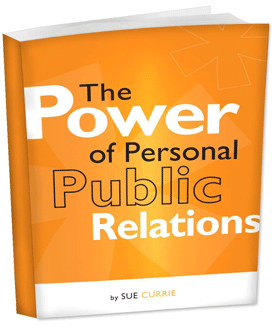 A highlight for me this week has been coaching a client on presentation skills. She is a delightful young woman with an inspiring story of overcoming adversity to emerge stronger, less fearful and more confident. Here she was telling me her story of courage and how she came through the other side and there I was coaching her on how to control nerves when public speaking. Seemed ironic really but to her being on stage and speaking was a terrifying thought. I gave her a few pointers about breathing techniques, focus, shifting energy and preparation to help control the nerves. Here is a summary of some of the other points we discussed to help her become a confident speaker.
A highlight for me this week has been coaching a client on presentation skills. She is a delightful young woman with an inspiring story of overcoming adversity to emerge stronger, less fearful and more confident. Here she was telling me her story of courage and how she came through the other side and there I was coaching her on how to control nerves when public speaking. Seemed ironic really but to her being on stage and speaking was a terrifying thought. I gave her a few pointers about breathing techniques, focus, shifting energy and preparation to help control the nerves. Here is a summary of some of the other points we discussed to help her become a confident speaker.
- Start right. When I first started as a professional speaker I was taught to make your opening strong; make a statement; tell a story and capture the audience’s attention in thirty seconds. I still adhere to that and make sure my first thirty seconds is memorised. I keep still and make eye contact. However, I recently heard a presenter say, “Start gentle and build.” He was very impactful. Whether you want to start with a statement or a gentle story is up to you, it’s your style but make that first minute count. Don’t waste time with “fluffy” small talk; make an impactful first impression.
- Be confident and in control. Choosing to be still and direct at the beginning of my talks is my way of keeping in control. Nerves can get in the way of your message. For me, concentrating on what I need to say at the start helps me feel confident. As it is often a new introduction to suit the audience (and to keep me fresh) I also practise and practise. Practise and rehearse your presentation as much as possible. Don’t just wing it. It won’t work out. It’s fine to work off notes or just bullet points as long as it is planned out beforehand.
- Mix it up. To be an engaging speaker you need to add in variety. When you structure your speech it shouldn’t be just point after point. Add in case studies, audience interaction or bring someone up on stage. Other elements you could add are music or video. Stories are a way to add variety. They don’t always have to be about you but others in your field. A personal story if it makes a point to your overall presentation can add an emotional element and engage the audience further. Take a chance to capture their attention
- Set the stage. You might not have the skills of an art director in a commercial or movie but I’m sure you’re aware how your viewing experience is impacted by the overall look. Take into consideration the visual elements. Often that means the presentation slides. Just recently, I was sitting up the back of an auditorium and I couldn’t see a thing on the slides; too many bullet points and font too small.Many professional speakers these days use minimal slides with only a few engaging photos or as mentioned, video or music. The first speech I ever gave I was so nervous I didn’t want to use PowerPoint as I thought I might mess it up and it would be a distraction; so I didn’t and all my talks in the beginning were with flip charts and coloured pens. It still added a visual element and the audience was just as engaged. Many professional speakers still work this way.
- Get your look right. Look the part of a polished speaker. Your style might be relaxed or formal. I’m not suggesting you wear sky high heels and stockings or a suit and tie if that’s not you. Dress so you are comfortable, can move well and present the best version of you. Dressing well is a sign of respect for the importance of your audience and your role in presenting to them.Body language also comes into consideration;hands in pockets or flicking your hair around is distracting from your message.
- Sound good. Great speakers vary the pitch, tone, pace, and volume of their voice. They also have mastered the art of using pauses. Be aware of how you sound by recording your presentations and see where you may fill up the gaps with ums and ahhs, you knows. You do want to be heard and may have to adjust your volume to the room. Not all rooms have great acoustics; the air-conditioning might be loud or there may be road noise coming from outside. Not everywhere will have a stage technician on hand to adjust your mic. Even though you want your speech to sound conversational you may have to project above your normal speaking voice.
- Leave them wanting more. Have you actually imparted something new or profound or entertained them in some way? Consider the take-away for your audience and how you want to make them feel. It might be you want to inspire them in some way or motivate, or to have helped them learn something new.
With this final point, my client not only inspired me with her story but imparted practical advice to use every day about being resilient, moving forward and undertaking new challenges.
Is public speaking challenging for you? Learn more about how you can Speak for Success here.
If you would like to know more about uncovering your personal brand, download the free eBook The Power of Personal Relations. You will also receive my regular eNews.
Read last week’s blog Leading Women Shine Every Day
Sue Currie is a personal branding specialist providing solutions to business owners and organisations to boost their image, renown, brand and business. She is the founder of Shine Academy™, providing education and professional development training and Shine Agency™ a firm providing personal branding and public relations services to help businesses and entrepreneurs position and present an impactful professional brand. Through speaking, corporate workshops, and consulting, Sue helps businesses and individuals to stand out and shine.
"




